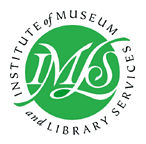 |
 | |
| Preserving and Digitizing Plant Images: Linking Plant Images and Databases for Public Access Completed November 2000 | ||
Interim Narrative Report
Slide Processing and Organization
For the largest part of the project, 3961 slides from the collection of Dr. Alwyn Gentry have been through the first phase of the slide-sorting process. Each slide was examined to determine whether Dr. Gentry assigned a collection number to it. If there was no collection number on the slide, it was filed in a slide box that was designated for this purpose. The process for digitizing the 1814 slides with no collection number will be determined later.
The remaining 2147 slides with collection numbers written on them were checked against the TROPICOS database to find out if a record for the collection number has been established. If there was a record in TROPICOS for the collection number, the slide was filed in a slide cabinet for further action. There were 1265 slides that already had records in TROPICOS; these slides were filed alphabetically by family, genus, and species (if available). One hundred thirty-one families are represented by these slides.
Slides with collection numbers that were not in the TROPICOS database had "skeleton" records created for them in TROPICOS. Information generally available on the slides, with a minimum of collection number and collector name, was entered in the skeleton record. These 818 records were coded with the IMLS project code for quick identification later, and to keep them from being deleted by researchers who found them in the database. The next step for this group of slides is data entry; trained data entry personnel will examine Dr. Gentry’s field books and other sources to complete the TROPICOS records for these slides.
Slide Duplication and Digitization
Initially we planned to send the slides to a photo lab to be digitized and stored on PhotoCD. We were able to acquire a slide scanner from another department and have developed a protocol for duplicating and scanning the slides.
Slides with collection numbers will be duplicated, and the originals scanned. An archival image of each slide will be stored on CD, and a web-ready image of each slide will be linked to the TROPICOS database. Because of the unique nature of the slides and their archival and historical value, we decided to use a local vendor for duplication to minimize the risk of slides being lost or damaged in shipping. We have tentatively identified AdStat, a local company, as our vendor based on price, understanding of the project and the Garden, and pickup and delivery. A box of 129 slides has been sent to AdStat for duplication. If the duplicate slides are satisfactory, the rest of the slides will be sent in for duplication as well.
Digital Camera Evaluation and Purchase
Since May 1998, the Web Group has been using a film camera to take pictures of plant specimens, then sending the film out to a photo lab to be digitized and stored on Kodak PhotoCD. More than 3800 images have been processed using this method. We determined, after reviewing literature on digitization of images, that using a digital camera could provide higher resolution images and probably faster workflow than we have been able to achieve using this method.
Initial evaluation of the specifications of several different digital cameras included cameras by Better Light, Leaf, Kodak, and Polaroid. Of all the high-resolution digital cameras surveyed, the Leaf Microlumina seemed to be the best camera for this project, based on the degree of resolution, the low cost, and the success of similar projects that were accomplished with the Leaf.
Various staff working on the IMLS project participated in a demonstration of the Leaf Microlumina and a Polaroid digital camera at Boeing’s Failure Analysis department. We were also able to arrange a demonstration of the Leaf camera in our office, and a demonstration of the Scandles lighting system from Plume Ltd., which was conducted by the designer of the lighting system. At that point we were satisfied with the results and decided to purchase the camera.
Unfortunately, when we tried to order it we were told that the Leaf Microlumina has been discontinued. Because of this, we concluded that it would not serve as a good model for a National Leadership Award project. We went back to the cameras we had reviewed earlier and compared them to the camera that the distributor of the Microlumina recommended as the closest to the specifications of the Microlumina, the Kaiser Scando camera. The Scando Dyna A+ offers 3648 x 4625 maximum resolution and the capability of producing 48 MB files. We determined that the Scando would be a good choice for us because of its combination of high resolution with relatively low price. Although we were not able to arrange a demonstration of the camera, we ordered it with the stipulation that we will have two weeks to thoroughly evaluate it.
Web Site
The IMLS project web site (http://www.mobot.org/mobot/imls) has been active since January 1999. It includes an abstract of our proposal, an explanation of the project, a forum for project participants and others interested in the project, contact information, related links, and a regularly updated progress report.
Database
We have not begun developing the database for the project yet; however, several staff members have participated in intensive training courses to learn Cold Fusion, a web development tool that will be used to create the web interface for the database. Over the next six months, we will begin the process of choosing a database product and creating the database. We will be preparing detailed documentation as we work.
Time Line
All work on the Gentry project should be in its final stages by November, 1999. At that point we will begin the slide sorting, duplication, and digitization process on the next two collections targeted by the IMLS project. Work on the database will begin no later than September, 1999 and will continue throughout the rest of the project. Web site maintenance will also continue throughout the project, and a final report will be posted on the web site at the conclusion of the project.